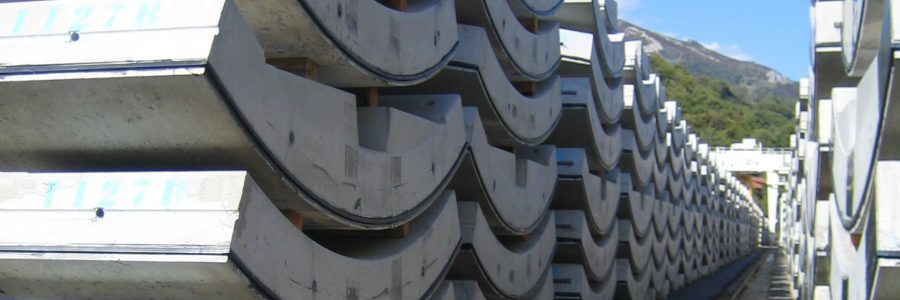
Tunnel segment gaskets: cast vs. non-cast
Traditionally, when constructing a bored tunnel, the concrete tunnel segments used are fitted with rubber gaskets onsite. These are often secured in place using adhesive, to ensure a tight seal and cushioned fit between each segment. When in situ, both the seal and segment are placed under significant pressure, so it is imperative that they are able to perform to the highest standards in order to guarantee safety and performance.
Here, we discuss how, by using a gasket which is pre-cast into the tunnel segment during manufacture, installers can save time and money, as well as ensure a consistently accurate installation and a retained symmetry.
The risks associated with non-cast gaskets
For many tunneling projects across the globe, tunnel segments are fitted with rubber gaskets onsite and secured using adhesive. But, it is not uncommon for those that use this method suffer time-consuming and cost-intensive repair work, which in extreme cases can exert negative effects on the outcome of a project.
Advance tunnel design with new cast-in-profile
For bored tunnels, using a gasket which is pre-cast into the tunnel segment during manufacture, removing the need for adhesive on installation can enable installers to save significant time and money.
This is because a cast-in gasket forges a superior bond connection with the segment to improve installation accuracy and eliminate the need for extra equipment. It is also more environmentally friendly and an altogether cleaner and safer process, as they eliminate solvent fumes and the presence of flammable materials. In fact, cleaning of the groove and correction of groove imperfections can be eliminated, optimizing and shortening the production process.
Cast-in gaskets also provide a faster, cleaner and more accurate alternative for the manufacture of tunnel segments, integrating the gasket as part of the segment production process. Additionally, they prevent air entrapment within the solution while also helping to retain shape, symmetry and integrity when transported.
The profile is designed to fit into the groove within the mold and is incorporated into the production process. Once it is fitted, the mold is filled with concrete and the cast then becomes an integrated part of the final product. The size of the groove therefore has a major effect on the choice of gasket and its subsequent performance. This approach to tunnel segment gasket design also ensures increased water-tight performance, due to complex integration of the gasket into the concrete segment.
Ensuring the right solution
It is vital that considerable thought is given to the design of the profile to ensure an efficient, watertight seal over the projected service life of the tunnel. Therefore, finding a manufacturer with a proven track record for durability and reliability is crucial. Manufacturers need to be able to cater for the size and depth of the tunnel, as well as meet stringent pressure and testing requirements in order to eliminate costly remedial work to seal leaks after construction.




